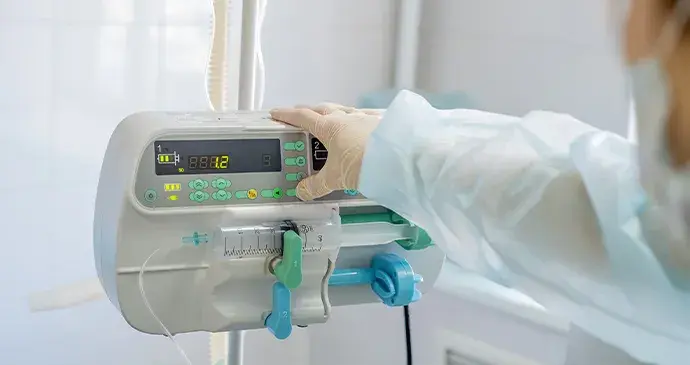Infusion pumps quietly deliver life-saving fluids and medications day after day without complaining. But when that reliability hits a snag. When alarms start going off for no reason or flow rates get wonky, the decision runs through your mind. Do we fix what we’ve got or spring for something new?
This choice touches way more than just your equipment budget. As our recent 2025 Veterinary Industry IV Pump Survey showed, it affects how your team works, how your patients respond, and even what clients think about your practice.
But you can make the decision methodically by following a few steps. Below is what we recommend to our clients.
The true cost of equipment that stops doing its job
When an infusion pump acts up, the headaches spread all over your practice.
Impact area
What our survey found
Workflow nightmares
60% of vets strongly agree that handling fluid delivery gets especially tricky during those uniquely busy days. When your equipment starts acting up too, your team has to cobble together workarounds that slow everything down.
Patient care problems 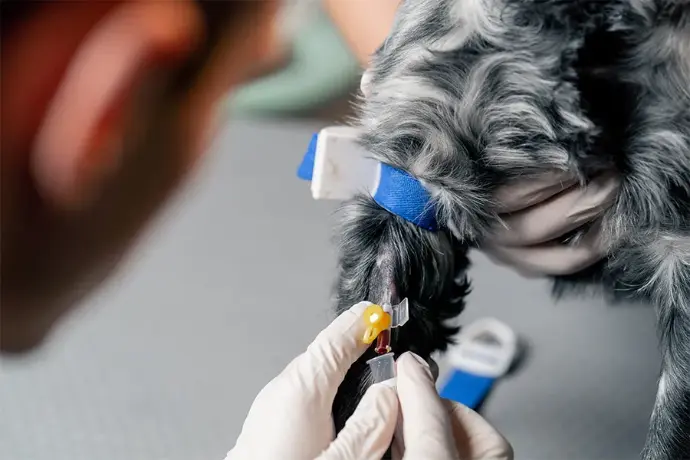
80% of folks in our survey confirmed that the quality of their infusion pumps directly improves how patients do. Makes sense, right? When your gear works the way it should, meds get delivered more accurately and treatments don't get interrupted.
Reputation hits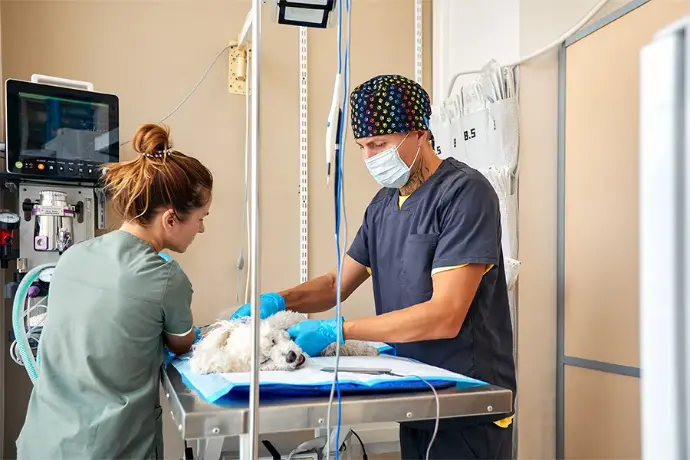
As Danielle from Portland put it, "When our equipment conks out, we look bad even if it's not our fault. Clients expect everything to work smoothly and when it doesn't they side-eye us." In fact, 81% of vets admitted that even unforeseeable equipment problems make clients less happy with their service.
Beyond the 50% rule
You've probably heard about the 50% rule. If fixing something costs more than half of buying new, just replace it. That's a decent rule of thumb but with fluid delivery equipment in a vet practice, you can dig a little deeper to make sure you’re spending budget the best way you can.
Let's look at a more practical approach that considers everything that matters - from your practice's finances to how well your patients recover after procedures.
Factor 1. How old is it and how often does it break?
Before you decide anything, take a good look at your pump's track record.
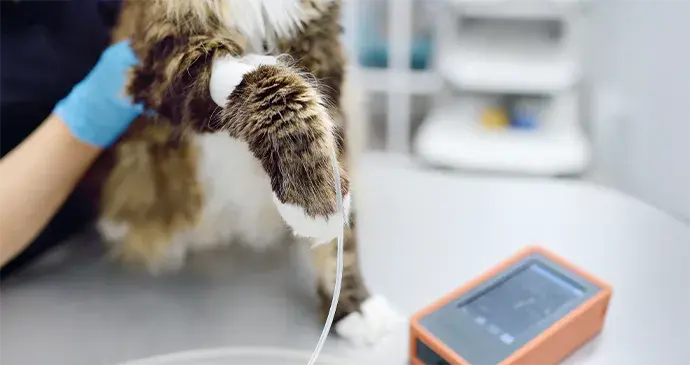
How old vs. how long they typically last
Most infusion pumps hang in there for about 7-10 years if you take care of them. If yours is pushing that age, even a solid fix might just be buying you a little time.
How often it's acting up
Are you seeing more and more problems lately? Our survey found a whopping 97% of vets deal with the same issues popping up again and again with their current pumps. As Daniel from Las Vegas told us - "Some of our older pumps just get stuck in this weird loop of random alarms going off. We've started keeping track to see if there's a pattern."
Spotting trouble patterns
Jot down each time something goes wrong in a spot you can easily check even when you’re busy. If the same part keeps giving you grief, you're probably looking at a bigger problem that'll eventually need more than just a quick fix.
Factor 2. Can it do what you need it to?
What you've got vs. what you need
Even when your current pump(s) is/are working just fine, is it keeping up with what your practice? A huge 86% of vets in our survey said they're seeing trends in specialized care that push them toward more or more feature-rich equipment. That's worth thinking about.
Getting the doses just right
Newer models tend to have more programming options for complicated cases. As Megan from Denver put it - "We're treating more dogs for cancer now, which means we need to be super precise with dosing and have special IV setups."
Jack-of-all-trades factor
High volume practices need pumps that can switch easily between everyday procedures and emergency situations. Does your current setup let you pivot quickly when things get intense?
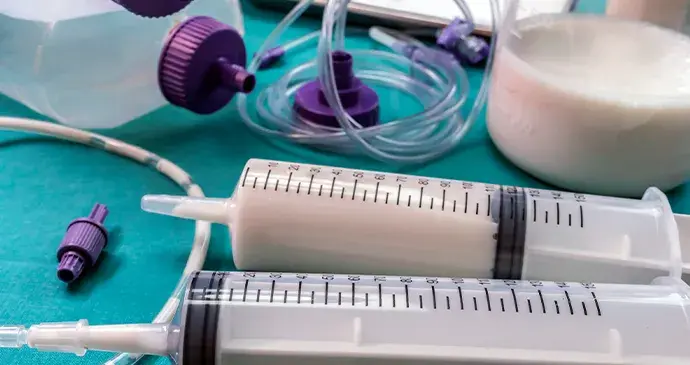
Factor 3. What's it really costing you?
Don't just look at the repair bill. There are peripheral factors you might think about for a flash, but never dwell on. You should dwell on them.
Downtime headaches
Think about what happens when your pump is out of commission. If you're constantly shuffling appointments or borrowing equipment, those hassles cost real money.
Maintenance money pit
Older equipment usually needs TLC more often. Be sure to add up all those maintenance visits when you're crunching numbers.
Can you get parts anymore?
Manufacturers eventually stop making parts for dinosaur models. Make sure you're not investing in a pump that'll be impossible to fix next year (we keep parts for the most important legacy models so you can keep them running for years)..
Warranty perks
A whopping 89% of vets in our survey think warranties are a big deal when buying equipment. Rebecca from Tampa summed it up - "A good warranty is like insurance. Having techs on call to fix things quickly means we're not leaving patients hanging."
Our repairs all come with a 6 month warranty.
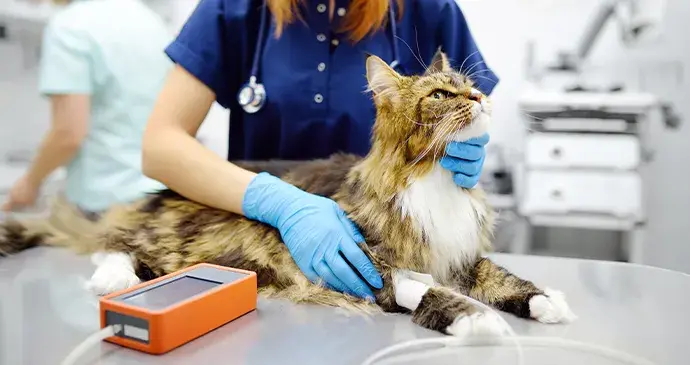
Factor 4. How's your team handling it?
Your crew's sanity matters.
Frustration
Are your staff members constantly rolling their eyes or muttering under their breath about the pump? Ongoing equipment headaches wear people down and slow everything up.
Learning curve reality check
Sure, new equipment means everyone needs to learn new buttons and menus. But a smarter or simpler interface might actually save time and cut down on mistakes in the long run.
Ask the people who actually use it
Talk to the folks who wrestle with this equipment every day. They'll tell you things about how it affects the practice that would never show up on a spreadsheet.

Your easy decision framework
To make this less of a gut feeling and more of a smart choice, try this approach
1. Rank what matters most - for your practice (maybe reliability is 30%, money is 25%, clinical needs 25%, and staff happiness 20%).
2. Score your options - from 1-10 on each factor.
3. Do the math- to see which choice comes out ahead.
Imagine you're deciding whether to repair your current infusion pump for $800 or replace it with a new model for $2,400 (these are random numbers for illustration). Here's how you might score each option.
| Factor (Weight) | Repair Score (1-10) | Repair Weighted | Replace Score (1-10) | Replace Weighted |
| Reliability (30%) | 5 (recurring issues) | 5 × 0.3 = 1.5 | 9 (brand new) | 9 × 0.3 = 2.7 |
| Financial (25%) | 8 (cheaper upfront) | 8 × 0.25 = 2.0 | 4 (expensive now) | 4 × 0.25 = 1.0 |
| Clinical capability (25%) | 4 (limited features) | 4 × 0.25 = 1.0 | 8 (feature rich) | 8 × 0.25 = 2.0 |
| Staff impact (20%) | 5 (staff familiar but frustrated) | 5 × 0.2 = 1.0 | 7 (learning curve but better UI) | 7 × 0.2 = 1.4 |
| TOTAL SCORE | 5.5/10 | 7.1/10 |
In this example, even though replacing costs three times more upfront, the weighted score suggests it might be the better long-term decision for your practice.
When fixing it probably makes sense…
The pump isn't that old yet (it’s not > 10 years old)..
It's just one random thing that broke, not a pattern. It fell, someone dropped it, there was another obvious cause.
Fixing it costs way less than a new one (under 30%).
It still does everything you need it to do.
You can easily get parts and service.
When it's time to shop for new…
Multiple things are breaking down.
It's breaking more and more often.
Your current pump limits what treatments you can offer and you know there are opportunities to expand.
Your team is constantly griping about it or creating workarounds.
Newer models would noticeably improve patient care.
Planning ahead instead of putting out fires
Whatever you decide about your current situation, think about the bigger picture.
Know when time's up. Keep track of how old all your big equipment is and roughly when you'll need to replace it, so you can budget for it.
Spread out the pain. Think about replacing one or two pumps each year instead of having to buy a whole new fleet all at once.
Money tricks. Look into financing deals, tax write-offs, and trade-in programs that might make new equipment more affordable than you'd think.
As Anthony from El Paso told us in our survey - "If one fix keeps a pump running solid for another year, I'm totally fine with that. But if the thing's breaking down every month, we end up spending more in the long run and my staff wants to throw it out the window."
You don’t do this often, so follow the guide and you’ll make the right decision
The fix-or-replace decision goes way deeper than just comparing price tags. When you look at the whole picture - reliability track record, what your practice needs clinically, total costs over time, and how it affects your team - you'll make choices that are better for both your patients and your bottom line.
Keep in mind that even equipment you've babied will eventually need to be put out to pasture. Planning ahead for replacements usually saves you money and headaches compared to scrambling when something dies in the middle of a busy day.
